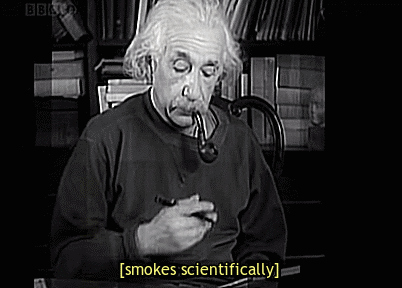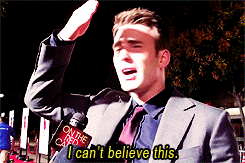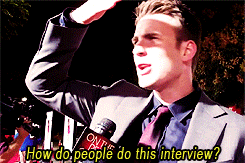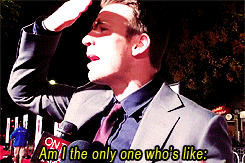Art By IG: @rhads001










Art By IG: @rhads001
Instagram: @artwoonz
More Posts from Possiblyfromorion and Others

“The virtue of a man ought to be measured, not by his extraordinary exertions, but by his everyday conduct.” – Blaise Pascal



An analemma, a composite image taken from the same spot at the same time over the course of a year, from the village of Callanish in the Outer Hebrides in Scotland, UK. Equinoxes are the middle points
via reddit
how do you tell an unhealthy isfp from an unhealthy infp? thanks 🙏
UNHEALTHY ISFPs fight against the influence others may have on them, trying to hold on to their independence and individuality. Steve Rogers/Captain America is a prime example of this in Civil War. They become stubborn and defensive of their way of life, not adjusting to the external world as it really is. Harry Potter and Zuko also exhibit this behavior. They both try their hardest to disregard the input of others in an act to preserve their initial Fi judgments. They both have to accumulate more Se experience in order to have a more objective view of themselves and their judgments. For Zuko it takes being exiled, being with his Uncle who pushes him constantly, and making even more mistakes in book 3 to come to a healthier place where he accepts the influence of others on himself.
UNHEALTHY INFPs fight against opposing ideals they find problematic. They challenge others and their ideas hoping to point out the flaws and prove the person they disagree with to be wrong. They can seem more extraverted when they are unhealthy in this way. In their own way by attacking the ideals of others they are trying to defend their own inner ideals from outside influence. Denying their proper Ne to see other viewpoints and the objective world. Their inferior Te is wielded so they believe they are being rationale in their defensive strategy. Amon from Avatar: Legend of Korra is a great example of this. For a non-villain that does this it is important to look at April Ludgate from Parks and Recreation. This behavior is often why she is mistyped as ISTP/INTP. They see her as more impersonal playing devil’s advocate, but when she is trolling people in her passive-aggressive way she is really on the defense trying to preserve her Fi and point out that everyone else is inauthentic.
The Gist:
ISFPs ignore others to preserve their sense of integrity/authenticity. INFPs fight others, almost like devil’s advocate but trying to prove some moral point. Both are stubborn.
goldbugsofficial
Visually stunning and laced with racks of spines. An evolutionary marvel from our deep past over 350 million years ago. Trilobites were masters of evolutionary specialization and this Quadrops is one of the most bizarre examples. Carefully exhumed from hard limestone, this trilobite fossil is evolutionary marvel and quite the natural sculpture!







#chris evans #in where he is actually steve rogers







Well, this is definitely the most fun I’ve had while making a post.
Inspired by this one from capnphaggit. Images & copyrights: Trifid Nebula (M20) by Marcus Davies, The Cat’s Eye Nebula and Star-forming region Sharpless 2-106 by NASA, ESA, the Hubble Heritage Team (STScI/AURA). Please don’t remove the credits.
ENFP Fictional Tropes
Most ENFP characters fall under at least one trope. There are many cross overs in tropes and some ENFPs may not fit the categories presented. However, these tropes do loosely address the roles ENFP characters play in narratives.
The Idealist
These ENFPs see the very best in everyone they meet. They are often the person who will forgive and help the most villainous of characters. They often bring out the best in others by just being themselves. They don’t even need to actively help others, but inspire others with their dreams and ideals. Their enthusiasm brought on by their Ne is often enough. Combined with their Fi caring towards individuals makes the caring on top of it. The idealist ENFPs are usually the most optimistic characters you will find.

Examples: Kenneth Parnell (30 Rock), Antoine Triplett (Agents of S.H.I.E.L.D.), Mad Hatter (Disney’s Alice in Wonderland), Tara Maclay (Buffy: The Vampire Slayer), Eleventh Doctor (Doctor Who), Buddy the Elf (Elf), Nemo (Finding Nemo), Barry Allen (The Flash), Olaf (Frozen), Kiki (Kiki’s Delivery Service), Ariel (The Little Mermaid), Moana (Moana), Naruto Uzumaki (Naruto Shippuden), Henry Mills (Once Upon a Time), Capheus (Sense8), Joyce Byers (Stranger Things), Rapunzel (Tangled), Jessie (Toy Story), Kimmy Schmidt (Unbreakable Kimmy Schmidt), Ottoki Otoya (Uta No Prince Sama), and Tara Chambler (The Walking Dead).
The Activist
The Activist ENFP is often first struck with Ne curiosity in the world and the ideas within it and then as they shape their Fi they rally behind a certain cause. The ENFP Activist is passionate about their cause. They may break the rules of society and systems, but they will never turn against their individual cause. Just like the Idealist, the ENFP activist often inspires others, however, they inspire those to follow them. ENFP activists can be very persuasive, living their life in line with their beliefs.

Examples: Hayley Smith (American Dad), Aang (Avatar: The Last Airbender), Karen Page (Netflix’s Daredevil), Marshall Eriksen (How I met Your Mother), Cindy Lou Who (Ron Howard’s How the Grinch Stole Christmas), Helen Parr (The Incredibles), Ray Palmer/Atom (DCTVU), Erik Lensherr/Magneto (Marvel Comics and X-MenCU), Mike Wheeler (Stranger Things), Sir Thomas More (The Tudors), Sam Seaborn (The West Wing), and Judy Hopps (Zootopia).
The Salesman
This ENFP character can convince you of anything and sell you on their vision. Whether they are healthy or not, their Ne makes them idea people that inspire, their Fi helps them appeal to people and their individual sense of self. They make you think that they can help make all your dreams come true. Healthy or unhealthy, their Te can help them make you think their idea is your priority, like they have your interests at heart (combined with Fi). This can help them actually help you or help them completely swindle you. No matter what they will make you for at least a moment feel special as they take you on a romantic journey of your dreams.

Examples: Katherine Pierce (The Vampire Diaries), Genie (Aladdin), Walt Disney (Saving Mr. Banks), Randy Marsh (South Park), Tom Haverford (Parks & Recreation), Erlich (Silicon Valley), Taco (The League), Tiffany Doggett (Orange is the New Black), Michael Scott (NBC’s The Office), Christian (Moulin Rouge!), John Hammond (Jurassic Park), Thomas Jefferson (Hamilton: An American Musical), Bumi (Avatar: The Legend of Korra), Gob Bluth (Arrested Development), and Malcolm Merlyn (Arrow).
The Prince
This is the darker side of the ENFP. They are probably the most self-involved trope. They believe their their wants are the needs of others. They demand others to serve their personal priorities. They often don’t see their work as selfish, but part of a greater cause or purpose. However, they are usually looping ENFPs. Many Prince ENFPs find themselves in leadership positions because they are over using their tertiary Te that they think is morally just because of their minimal use of their secondary Fi function. They use Te objectivity as a shield against their own subjective motives of Fi-Si. These types often have potential to be more positive tropes, but have faltered in their quest to satisfy their inferior function fears and desires.

Examples: Ice King (Adventure Time), Malcolm Merlyn (Arrow), Cheryl Tunt (Archer), The Master (Doctor Who-10th Doctor Era), King Richard, Jaime Lannister (Game of Thrones), Ronald Weasley (Harry Potter Series), Sean McGinnes (Hell on Wheels), Willis ‘Diamondback’ Stryker (Luke Cage), Julia (Syfy’s The Magicians), Erik Lensherr/Magneto (Marvel Comics/X-Men Cinematic Universe), Obito Uchiha (Naruto Shippuden), Peter Pan (Once Upon a Time), Marshal D. Teach “Blackbeard” (One Piece), Klaus Mikaelson (The Vampire Diaries/The Originals), and Catherine Earnshaw (Wuthering Heights).
The Champion Leader
ENFP leaders become so in their hope to help others. They are concerned with the forgotten because of their Introverted Feeling. They are a champion of a cause like the activist, but find themselves leading others in order to accomplish their goals. Their leadership style isn’t one of intense organization, but of individuality and independence. They are often because of Ne-Fi on the ground doing tasks with their followers in order to accomplish group goals. They have a hard time delegating, standing back and letting only others enjoy the fun of the action. This is due to their Ne being more present oriented and Fi being a function that can’t be used conceptually, but perceptually. The ENFP leader is far more comfortable helping others in the situation rather than apart from it.

Examples: Clark Kent/Superman (DC), Renly Baratheon (Game of Thrones), Chris (Bravest Warriors), Peter Quill (Guardians of the Galaxy), King Arthur (Mists of Avalon), Moana (Moana), Hashirama Senju (Naruto Shippuden), Peter Pan (Disney’s Peter Pan), Monkey D. Luffy (One Piece), Dr. Alexander Sweet (Penny Dreadful), Erik Lensherr/Magneto (Marvel/X-Men Cinematic Universe), and Captain Kirk (Star Trek).
The Goof
This is the most under-estimated ENFP character. They come off is aloof, odd, and carefree on the surface. But this is often a misread. The ENFP goof is often wandering the unbeaten Ne dominance path, seeing things differently in ways that other types can’t accept or don’t understand. Their sense of genius is mistaken for oddity. They usually surprise others with their intelligence and success, because it is never how others would go about completing a given task or goal. Their genius word play is often seen as simply humorous rather than an indicator of a deeper intelligence.

Examples: Mabel Pines (Gravity Falls), Second Doctor & Eleventh Doctor (Doctor Who), Troy Barnes (Community), Fez (That ‘70s Show), Gregory (Over the Garden Wall), Spongebob Squarepants (Spondgebob Squarepants), Bing Bong (Inside Out), Hugo ‘Hurley’ Reyes (LOST), Bert (Morry Poppins), Mei (My Neighbor Totoro), Winston Bishop (New Girl), Erin Hannon (NBC’s The Office), Russell (Up), Lorelai Gilmore (Gilmore Girls), Madam Mim (The Sword in the Stone), Gene Belcher (Bob’s Burgers), Scooby-Doo (Scooby-Doo, Where Are You?), Peter Quill (Guardians of the Galaxy), and Bolin (Avatar: The Legend of Korra).
-
 squidles-stuff liked this · 3 months ago
squidles-stuff liked this · 3 months ago -
 rodckers liked this · 11 months ago
rodckers liked this · 11 months ago -
 gstainsbyy reblogged this · 1 year ago
gstainsbyy reblogged this · 1 year ago -
 something-along-the-lines-of-man reblogged this · 1 year ago
something-along-the-lines-of-man reblogged this · 1 year ago -
 greyspectreofkirkwall reblogged this · 1 year ago
greyspectreofkirkwall reblogged this · 1 year ago -
 sweet-baphomet reblogged this · 2 years ago
sweet-baphomet reblogged this · 2 years ago -
 whenyourunoutofpringles liked this · 2 years ago
whenyourunoutofpringles liked this · 2 years ago -
 poki-art-reblog reblogged this · 2 years ago
poki-art-reblog reblogged this · 2 years ago -
 3n-n3utr0 reblogged this · 3 years ago
3n-n3utr0 reblogged this · 3 years ago -
 shades-of-blue-12 reblogged this · 3 years ago
shades-of-blue-12 reblogged this · 3 years ago -
 shades-of-blue-12 liked this · 3 years ago
shades-of-blue-12 liked this · 3 years ago -
 needingthatsomething reblogged this · 3 years ago
needingthatsomething reblogged this · 3 years ago -
 needingthatsomething liked this · 3 years ago
needingthatsomething liked this · 3 years ago -
 dantekun666 reblogged this · 3 years ago
dantekun666 reblogged this · 3 years ago -
 sangre-blanca reblogged this · 3 years ago
sangre-blanca reblogged this · 3 years ago -
 haze-sodium reblogged this · 3 years ago
haze-sodium reblogged this · 3 years ago -
 haze-sodium liked this · 3 years ago
haze-sodium liked this · 3 years ago -
 jamesternes reblogged this · 3 years ago
jamesternes reblogged this · 3 years ago -
 jamesternes liked this · 3 years ago
jamesternes liked this · 3 years ago -
 kola2214 liked this · 3 years ago
kola2214 liked this · 3 years ago -
 theatheistgirl liked this · 3 years ago
theatheistgirl liked this · 3 years ago -
 evilveva liked this · 3 years ago
evilveva liked this · 3 years ago -
 harmcityherald reblogged this · 3 years ago
harmcityherald reblogged this · 3 years ago -
 its-kawaiidestinyhottub reblogged this · 3 years ago
its-kawaiidestinyhottub reblogged this · 3 years ago -
 its-kawaiidestinyhottub liked this · 3 years ago
its-kawaiidestinyhottub liked this · 3 years ago -
 muny-luny liked this · 3 years ago
muny-luny liked this · 3 years ago -
 paintedprisms liked this · 3 years ago
paintedprisms liked this · 3 years ago -
 winterpeacock liked this · 3 years ago
winterpeacock liked this · 3 years ago -
 orangeape liked this · 3 years ago
orangeape liked this · 3 years ago -
 blue-yucca reblogged this · 3 years ago
blue-yucca reblogged this · 3 years ago -
 viridianstarlight liked this · 3 years ago
viridianstarlight liked this · 3 years ago -
 biscuiteatinghoes reblogged this · 3 years ago
biscuiteatinghoes reblogged this · 3 years ago -
 biscuiteatinghoes liked this · 3 years ago
biscuiteatinghoes liked this · 3 years ago -
 daughterofposeidon46 liked this · 3 years ago
daughterofposeidon46 liked this · 3 years ago -
 waggisbag liked this · 3 years ago
waggisbag liked this · 3 years ago -
 peggytheheadsmasher liked this · 3 years ago
peggytheheadsmasher liked this · 3 years ago -
 littleaipom liked this · 3 years ago
littleaipom liked this · 3 years ago
